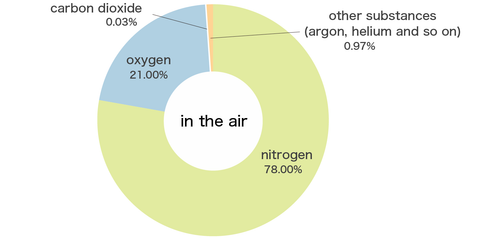February 25, 2021
What are reactive oxygen species?
The air contains about 20% oxygen.
Oxygen is by nature a highly reactive substance, as when fuel and oxygen in the air are burned to produce energy that can be used to run an automobile. Oxygen is a highly reactive substance by nature, but when it is incompletely reduced and transformed into a more reactive compound through various actions, it is called “reactive oxygen species”.
Superoxide
Hydroxyl radical
Hydrogen peroxide
These are typical compounds.
Because of their high reactivity, they readily react with various substances in the body. If it reacts with cells, it can break down cell membranes, and if it binds to proteins, it can disable enzymes necessary for biological reactions. If it reacts with genes, it can cause mutations, which can lead to aging, arteriosclerosis, and cancer.
Hydroxyl radicals are particularly reactive, and it is said that most of the biological damage caused by reactive oxygen species is due to hydroxyl radicals.
Although reactive oxygen species (ROS) are often treated as bad guys because they “rust the body”, they actually protect the body from harmful foreign substances such as bacteria and viruses. The body produces reactive oxygen species to protect itself.
A typical example of this is the defense function of white blood cells, which produce and use reactive oxygen species to kill the bacteria they have taken in. In other words, they are also necessary for the body.
Since living things have been using oxygen for so many years, the body has the ability to lose the activity of excessively generated reactive oxygen species, and it also has the ability to repair genes damaged by reactive oxygen species.
So, normally, there is not much to worry about, but stress, smoking, ultraviolet rays, radiation, and other factors can cause an overabundance of them.
This excess of reactive oxygen species, which the body cannot handle, can cause health problems.



